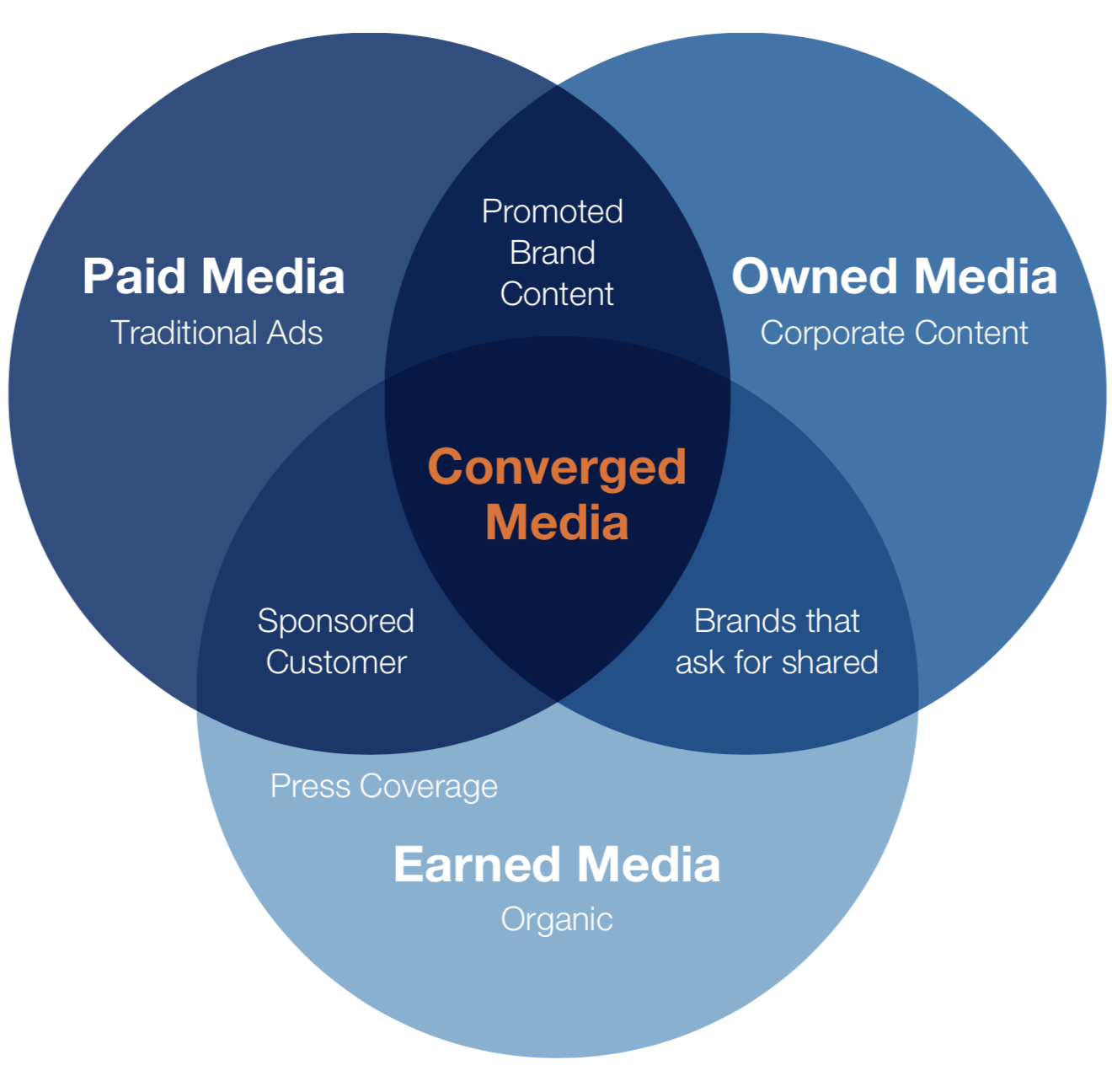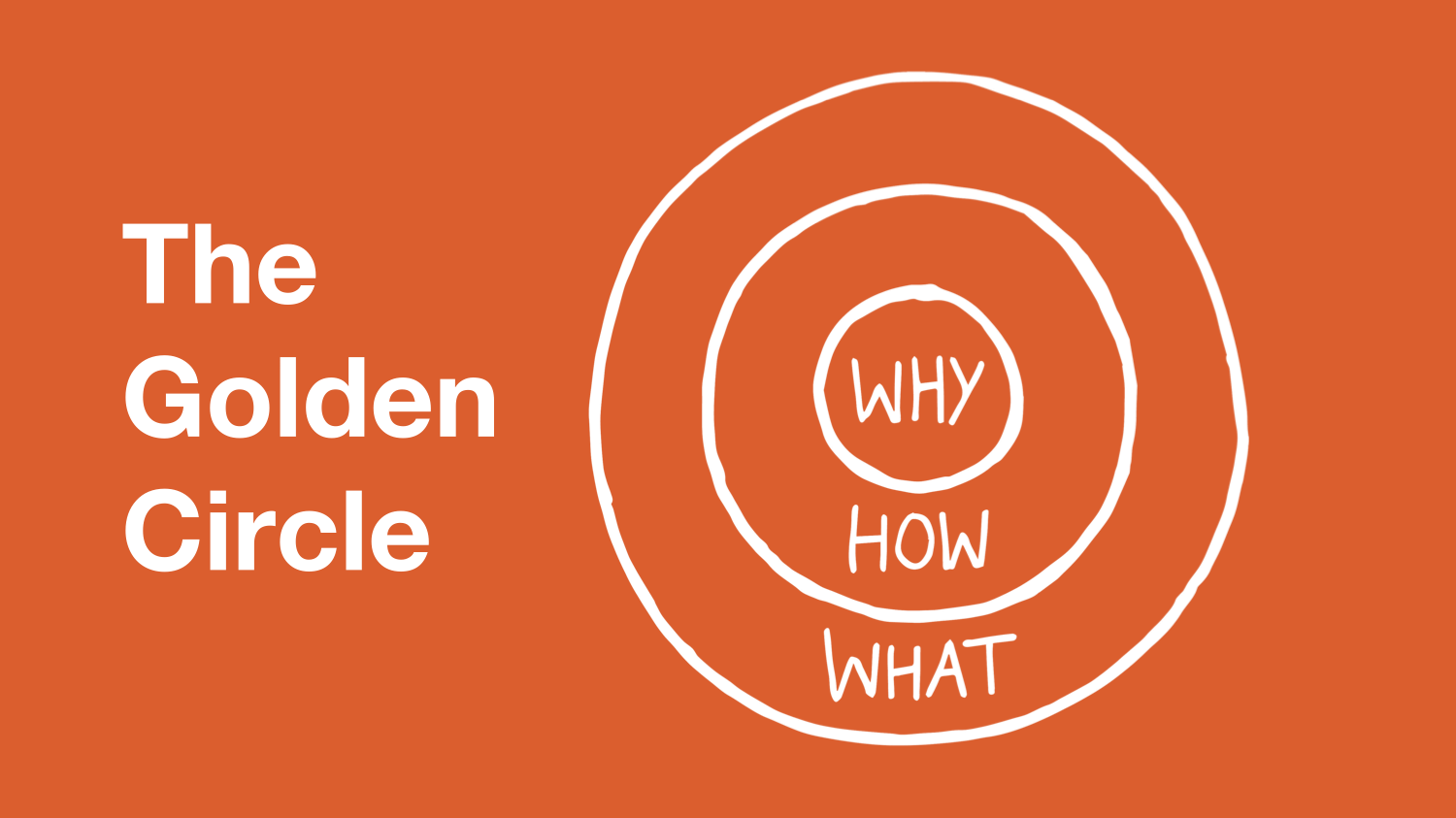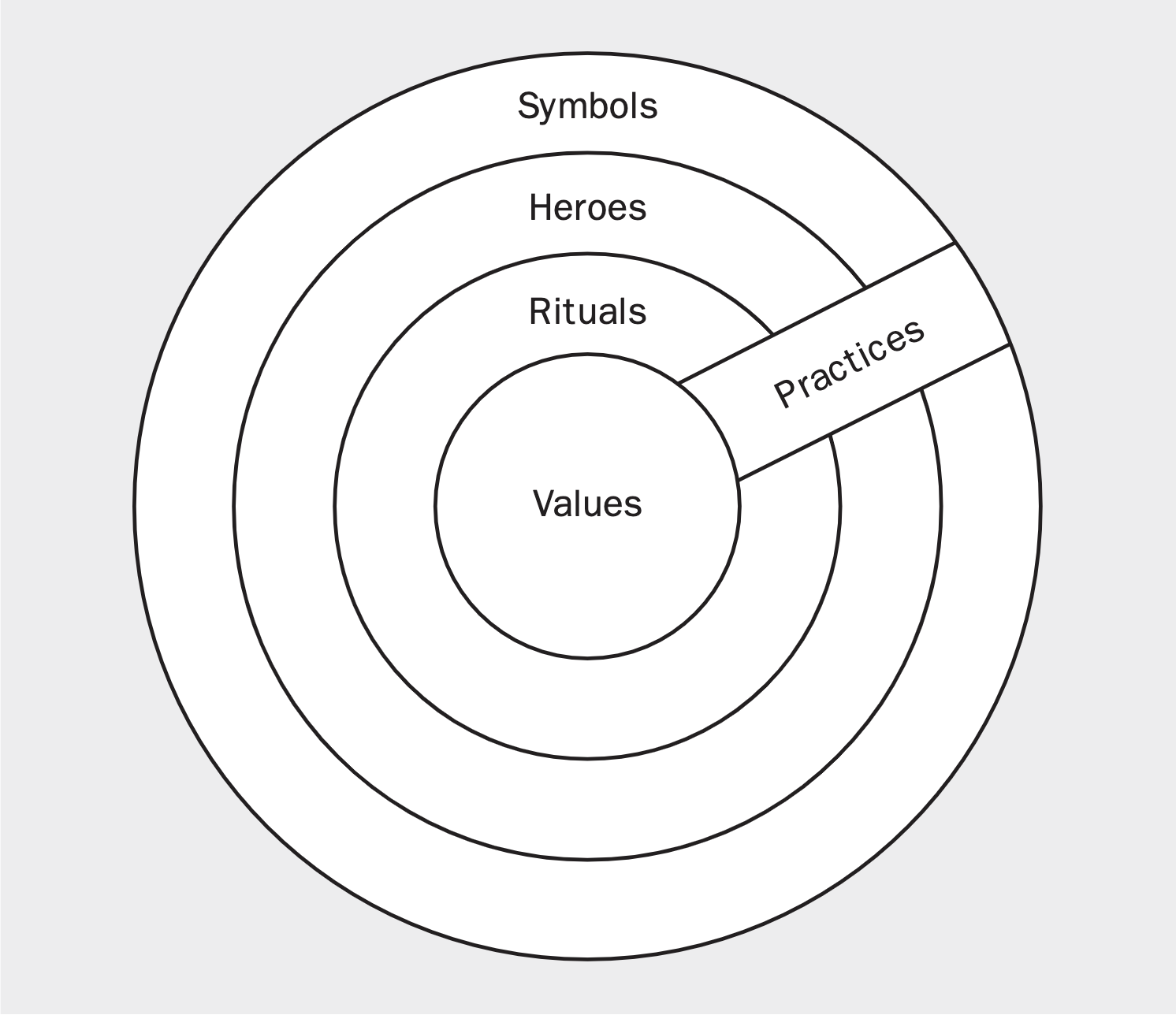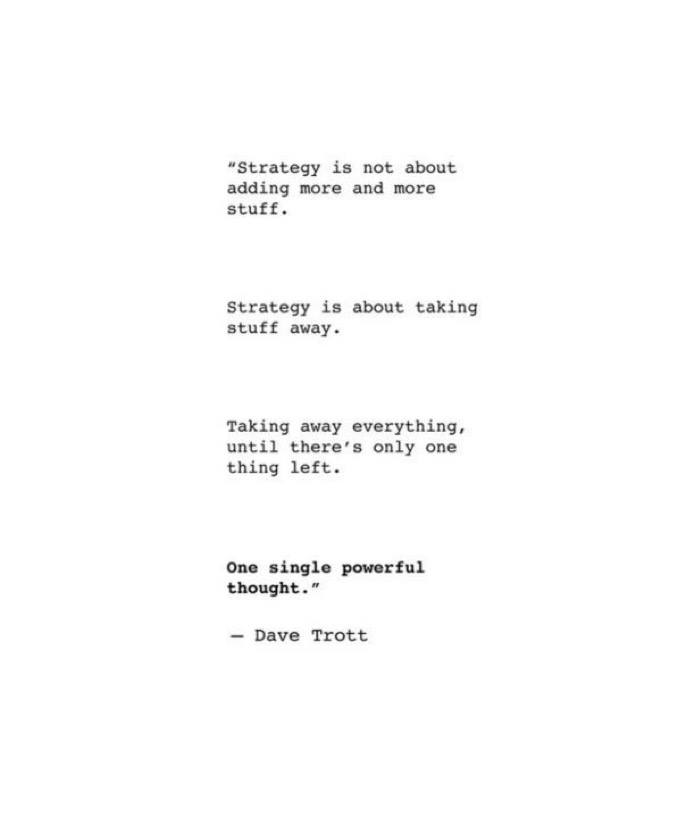Human nature insists on a definition for every concept. The field of strategic management cannot afford to rely on a single definition of strategy, indeed the word has long been used implicitly in different ways even if it has traditionally been defined formerly in only one.
This article became long due to the need not to skip steps and avoid the shortcuts of those who already work in Digital Communication for more than a decade.
As a prescription, the text is recommended for those who are beginning to learn about this area and also experienced professionals who seek to question their methods, and to strengthen their capacity for analysis and design of a Communication Strategy.
The objective was to align an easy and comprehensive text around the subject. We will be presenting the concepts and their historical evolution in order to understand how we arrived at the current status, with the aim of constructing the criticism that “everything is strategy and nothing is strategic”. At the end, we present the perspective of Strategy as a Problem-Solving Tool.
To make it easier to read, the article has been divided into chapters, which we will publish in separate blog posts.
We don’t want everything to be an effort of personal description. Therefore, at the end of the article, there is a collection of references and definitions that helped to structure these ideas.
Similarly, the comment box is open for your questions, requests for clarifications and corrections.
What is strategy and how it started - historical perspective
Strategy is a word that is used exhaustively, losing its meaning in every misuse. Nowadays, everything is strategic.
Planning is strategic, as if it were even possible not to be. Partnerships are strategic, decisions, resources. We are mentioning this word in all possible elements of a company’s daily life. It’s an attempt to emphasize the value of a manager’s tasks, without, however, going further than adding a word associated with inteligence and thougtfulness.
And, even in the field of academic and formal knowledge, there are more definitions of strategy than those we can conceive. This volume is linked to the existence of different fields in which the notion of strategy can be applied.
Strategy can be military, and that was the starting point with “The Art of War” by Sun Tzu and the “Book of Five Rings” by Miyamoto Musashi.
In the West, the concept of strategy was first associated with the conquests of Alexander The Great and then with the Roman armies. Whose achievements were largely due to their organisational abilities.
This is when Strategy becomes associated with politics, territorial management and rhetoric. (We can affirm that this association already existed years before that. The argument, however, claims that this association becomes stronger at the apex of the Roman Empire.)
This statement is supported by the teaching of rhetoric and the way the Roman Senate depended heavily on oratory abilities to influence decision-making.
Game Theory
We can also associate the concept of strategy with Game Theory and, to better understand what that implies, there is a Yale course online.
We aren’t going to go down that path, since our aim is to explain strategy in the context of Digital and Social Media Transformation.
In Game Theory, we would extend the subject in a more abstract way and discuss the tools of its application: the analysis of the playing field, the analysis of players (adjuvants or not), the choice of tactics, etc.
Strategy and Business Management
Let’s jump from the Roman times to the 1970s and the work of Henry Mintzberg.
Henry Mintzberg belongs to the field of Business Management and that is where the word strategy is applied.

The first is that in ‘The Strategy Concept I: Five Ps for Strategy Mintzberg assumes the existence of multiple perspectives on what is strategy, and shows that they are not antagonistic.
- Strategy as a Plan (Objectives, resource allocation, and tactics)
- Strategy as Maneuver (Lure or tactic to influence the opponent)
- Strategy as a Behavior Standard
- Strategy as Position (In the market, or as part of any other environment in which an organization exists)
- Strategy as Perspective, or vision of how the world works: “Strategy in this respect is to the organization what personality is to the individual”
- Strategy as a Concept shared by the members of the organization.
Later on, Mintzberg expands this list in the book “Strategy Safari”.
The second is that, in the same article, there is a distinction between a “Intended Strategy”, and Emerging Strategy, and what is in fact the Realised Strategy.
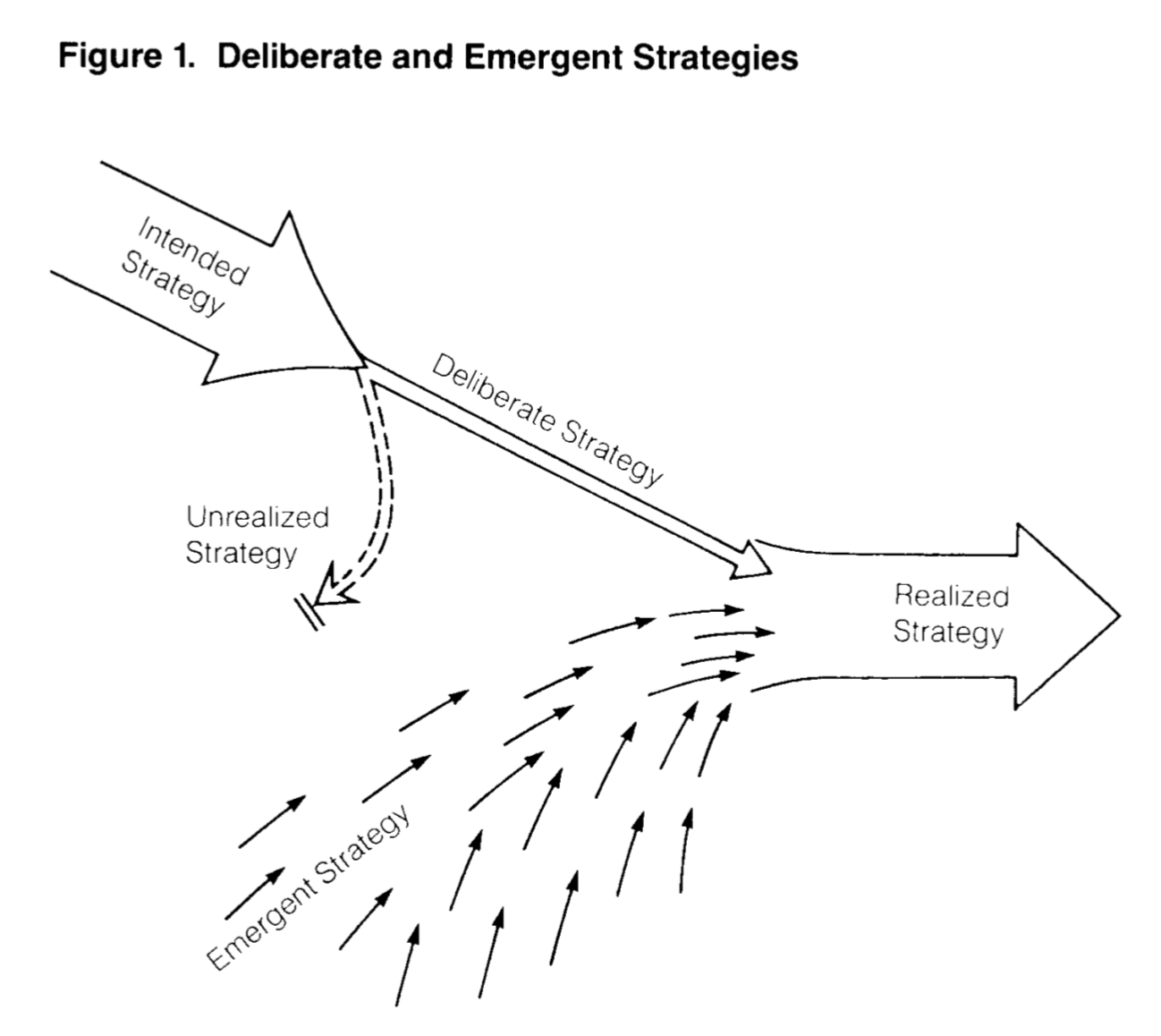
With this, we close the chapter dedicated to Strategy as part of the Business Management. There would be much more to explore and other perspectives, even at the end of this article. What we need to extract are these perspectives that, when combined, build a more complete definition of what is currently the concept of strategy.
The next step will be to reflect on the evolution of Marketing and Public Relations and also the reaction of these fields to the digital revolution that started in 1999. (As a date of birth, we are using the year in which the term Web 2.0 was used for the very first time).
The evolution of Communication in Companies
Throughout the previous chapters, we presented the evolution of the concept of “strategy” and how it is applied in business management. Obviously, there would be much more to explore.
Now, It is important to remember the evolution of Corporate Communication and to establish a parallel with the evolution of communication channels. In the end, we seal the deal with what is Digital Communication Strategy.
Public Relations and Marketing
Public Relations
When, in 1877, an American railroad tycoon stated “The Public Be Damned!”, he did more than trigger a crisis management situation, with waranted a response in the Chicago Times. Since then, companies have become more attentive to their reputation among different audiences, and more careful in managing their relationship with journalists.
This is the environment in which Ivy Lee and Edward Bernays established themselves as the first public relations professionals.
Ivy Lee, by publishing his Declaration of Principles in 1906, positioned his office as a reliable and factual source of information and consolidated the role of Public Relations in managing the relationship with journalists. It was around this time he invented the Press Release. And he was one of the first consultants in reputation management, when he had the Rockefeller family as his client.
In turn, Edward Bernays, who was Sigmund Freud’s nephew, is more associated with the use of Public Relations campaigns as a promotion tactic.
One of the most iconic campaigns was for Lucky Strike. The brand wanted to encourage more women to smoke. During an Easter Sunday march, a group of women hired by Bernays participated holding up Torches of Freedom, equating cigarettes with female emancipation.
Later, Public Relations became associated with manipulation and its professionals were given the epithet of Spin Doctors, for their ability to spin the narrative in favor of their clients.
Ira Basen, a CBC journalist, committed himself to describing this evolution in a six-episode program entitled “Spin Cycles: A Series About Spin, the Spinners and the Spun.”.
Today, the field of Public Relations extends to Stakeholder Management and Reputation, Event Management, Press Relations, Lobbying, Internal Communication, etc.
Tactics have multiplied, and so did the resources available, and companies have grown to recognise the value of managing the relationship with the different audiences in their market.
Marketing
We find marketing principles throughout history. But the modern version of this discipline has its genesis in the work of Philip Kotler.
The search for a definition of what is Marketing has triggered a never-ending debate, as shown in the article “The Scope of Marketing” de Shelby D. Hunt. Therefore, let’s focus in one the definitions presented: “The process in a society by which the demand structure for economic goods and services is anticipated or enlarged and satisfied through the conception, promotion, exchange, and physical distribution of goods and services”.
This definition is in line with the 4 Ps of Marketing, initially proposed by Kotler:
- Product
- Price
- Place
- Promotion
But he also contests his definition, arguing that marketing can apply to much more than sales in the private sector. It can also fit into non-profit organisations, political parties, etc. Time has shown that this vision was correct.
In any case, Marketing is much closer to the production chain and business processes than Public Relations. Therefore, we frequently find the expression “Marketing Strategy” more often than “Public Relations Strategy”.
Let’s “steal” two definitions for this concept.
"The marketing strategy lays out target markets and the value proposition that will be offered based on an analysis of the best market opportunities."
"The pattern of major objectives, purposes and goals and essential policies and plans for achieving those goals, stated in such a way as to define what business the company is in or is to be in.
We are not interested in separating Marketing Strategy and Public Relations Strategy. What we are looking for is a definition of Strategy that can be applied to all Corporate Communication. And this definition should be applicable in any medium, digital or otherwise.
The evolution of Communication and the Digital Age
The evolution of technology has allowed us to create communication channels for any purpose, customised for different personalities. If, in the birth of Public Relations, companies only had to manage communication through Advertising and Newspapers, and later through Television and Radio, the situation has changed. Blogs and social networks multiplied, emerging and withering in months.
Nowadays, we can’t imagine what the next social network will be, who will use it and for what purpose. But the Internet has brought more than different communication channels.
When this Communication Era was baptised as Web 2.0, we saw two major shifts in society. One was the abandonment of the entry requirements. Now, it’s no longer necessary to know code to create a webpage, build a blog or share a portfolio.
The other was the possibility of immediate interaction with the author or authors. I can write comments on a blog, reply to tweets, comment on Facebook.
In 1999, when the Cluetrain Manifesto declared “_Markets are conversations”, it was adding a set of principles to guide business communication to what was Web 2.0.
And even the way we organize and work together has changed radically. This was shown by Clay Shirky in 2008 in the book “Here Comes Everybody”.
This was followed by a transition period for companies, a search for solutions and work models that would allow them to take advantage of the opportunities brought by Social Media.
Which of the social networks is more appropriate for our Brand/Product?
How should we participate in this conversation between people?
What is our goal?
What should be the measure of success?
What will our Strategy be?

As companies entered the Digital Age, they felt the shock of having to cope with several paradigms changing at the same time. They became more transparent through the speed with which information was being shared. Their products came under unprecedented scrutiny. For example, Kryptonite saw one of its padlocks opened with a simple Bic ballpoint pen.
And, with this, we have finally arrived at a scenario in which Communication Strategy has room to grow (or even exist). This is because the effects of communication and advertising have become faster; because we have finally the means to have data to tweak tactics in real time; and because companies have no choice but to do everything in their power to seize the opportunities of the Digital Age.
And all this means updating the concept of Strategy.
Communication Departments and Agencies
Nowadays, companies often use agencies and consultants to execute communication projects. This is inevitable. Companies cannot hire people and provide training to fully address their needs in such an environment of quick changes.
Before we go any further, let’s explain these two arguments.
It’s hard to hire people for a communication department because small and medium sized companies need professionals with autonomy and decision-making skills.
It’s difficult to ensure training in large companies, because it depends on the market’s capacity to structure an adequate training offer, and it’s not always possible to provide several new experiences through bolder campaigns or strategies. Large companies are averse to risk.
In Portugal, with the shock of Web 2.0, agencies quickly looked for people with talent and capable of understanding this new communication scenario. They found people in all fields.
- Developers
- Account Managers
- Bloggers
- Marketing and Public Relations professionals looking for a career
- Bank Employees
- Journalists
- Tourism
- Human Resources
(All these examples are people I know, who, at one point, worked as Community Managers. I focused on those I consider to be good professionals in the field.)
And, therefore, the agencies looked for the best way to structure the work needed and provide the best possible service to clients. In hindsight, during that period , there was not enough concern for long-term thinking. There were several failed attempts by some brands; we saw success stories and blogs were one of the sharing tools in the community of communication professionals.
Brief, Debrief and Pitch
There’s a problem with the agency model. It doesn’t give an incentive to the construction of a true strategy, but rather the answer to a challenge to “win the customer”.
When a company detects an opportunity, it calls agencies to take part of a tender. It’s a simple process, in which a document brief is outlined, including all the information that agencies need to construct a proposal.
There may be a questioning stage about the submitted brief, known as debrief. The submission of a debrief is scheduled, so as not to delay the submission of the proposal.
The client’s briefing also establishes what is expected to encounter in the proposal. And, in the end, this proposal is presented by the agency to the client at the pitch meeting. This meeting tends to include 2 to 5 people from the agency side. And on the client’s side, it includes the Marketing/Communication department. In some cases a pitch presentation can include members of the board.
If the goal is to win the client, then the agency tends to tell them what they want to hear during the pitch.
And the level of detail of some proposals is so high that it’s enough work for the client to be able to carry out some of the ideas by themselves. If the agency doesn’t win the pitch, all that work is pointless.
This model is so deeply unfair to agencies that one of them has gone so far as to start a campaign entitled #saynotospec.
However, it’s important to agree that this model works for a company looking to operate a campaign or test a new social network.
Over time, this space began to be occupied with business consulting firms, which have a remarkable difference in the working process. A consultant has a process and a working method where the client is involved from the beginning to the end. The client will not pay for a final outcome, but for the application of a methodology and the delivery of a document, or a set of materials, that reduce the uncertainty about the results and coherence of the tactics applied.
This model is fairer to both parties and generally has a higher quality outcome.
This is the model that I apply when I work with the Lisbon Collective on a consulting basis; and that I stand for in the Post-Graduation classes in Digital Strategy at ISCSP.
This chapter is relevant, since it greatly influences what is currently the concept of digital strategy. But we won’t discuss much more about how the digital communication and consulting services market operate in Portugal. At this point, it makes sense to start exploring the most current definitions of Communication Strategy.
We won’t make a distinction between “Strategy” or “Digital Strategy”. Whether using digital channels or classic media, we are communication professionals. Therefore, it’s normal that the most used term from now on is “Communication Strategy” or simply “Strategy”, for the sake of brevity.
Strategy in the Digital Age
There is plenty of online information about Digital Strategy, which makes it more confusing to know which one we are talking about. The term is used to refer to digital transformation processes, in which working methods and processes are modernised. As a matter of fact, we find more information using the expression “Social Media Strategy”.
In some cases, this digital transformation process is an important component of the Communication Strategy. But, here, we will talk about what has a direct impact on a company’s Communication. That direct impact comes from the stance that a company assumes in these communication channels, the social networks that it decides to use, the way it can create an environment that allows flexibility in managing communication, among other things.
The Context of Social Media
In 2011, I was working at Fullsix, one of the largest Digital Agencies in Portugal, with plenty of opportunities to learn from some of the market’s best professionals.
Within the agency’s own motto, Full Service Interactive Experience, we intended to deliver not only a quality service, but also a set of strategic lines to ensure the coherence of future campaigns.
I’m using the term “strategic lines” on purpose, because it wasn’t a formal strategy, nor something intended to be used by someone outside our social media department, or by the client’s communication department. And, during that stage, the most important thing was not to establish the position of social media as something strategic. It was to prove the return on investment.
Clients acknowledged the value of the qualitative information gathered, identified improvements in problem solving, in support of the community (customers). Some of the clients included questions regarding the status of their digital presence in their market studies. And, in that way, companies adopted this paradigm as quickly as possible.
The Current Strategy Times
First, it must be emphasized that the concept of strategy has been diluted throughout the entire business and communication vocabulary.
We talk about different types of strategy.
- Business Strategy
- Communication Strategy
- Marketing Strategy
- Brand Strategy
- Content Strategy
This is why the concept of strategy is confusing. With so many different perspectives and the need to have everyone focused on the same goal, it ’s important to agree on a definition.
In this article, we talk mainly about communication strategy and not just marketing strategy. After all, marketing is focused on the product, and Communication is a field with a broader scope. A communication strategy intends to establish relationships and build a community, balanced with its business strategy. It also includes other components, such as persuasion, sales, partnerships or negotiations. Our field will be the communication established between companies and external audiences.
A client who asks us for a strategy wants, in a first approach, to organize communication efforts and point to a proper objective that is aligned with the business.
With the paradigm shift fueled by Web 2.0, there was an acceleration of something that was already taking place in companies. Before, the management, production and sales departments were responsible for conducting the strategic thinking. This took place because they had a clearer and more quantitative view of the impact of their decisions and could use data to support the creation of a plan.
The decision of whether or not to move into a new geographic market, or open a new product segment could be made based on statistics and forecasts of sales, and profits, after calculating the costs of logistics and production.
In digital channels, marketing and public relations professionals can finally have access to quantitative data in real time. This happened at a time when the questions brought by companies were still quite pragmatic.
- How should a Brand deal with influencers?
- In which social media channels should it be present, and for whom?
- What is the content that needs to be published, what is the right tone of voice?
- How should the company integrate customer support with a social media plan?
- …
Some companies that failed to consider these issues have gone down in history as digital disasters. In Portugal, Ensitel was involved in a crisis. It started on a mobile phone and in a dispute at the arbitration centre, it reached its peak in threats of a court case, censorship accusations and prime time news reports. It ended when the brand gave up taking the case to court, eventually disappearing from the Portuguese market. Today, Ensitel is an abandoned Wikipedia page.
Motrin was another such episode. In less than 48 hours, this brand of painkillers abandoned the entire advertising campaign it had just launched. Motrin had launched a set of ads on YouTube that were poorly received by the customers for whom they were intended. The entire campaign investment fell by the wayside and Motrin had to issue an apology.
A similar problem emerged due to a lack of internal alignment at Pepsico, when in Sweden, the social media team published photos of a voodoo doll wearing Cristiano Ronaldo’s jersey.




